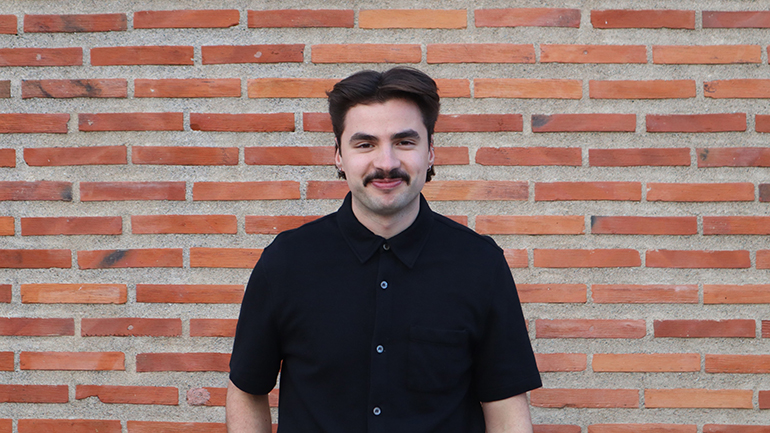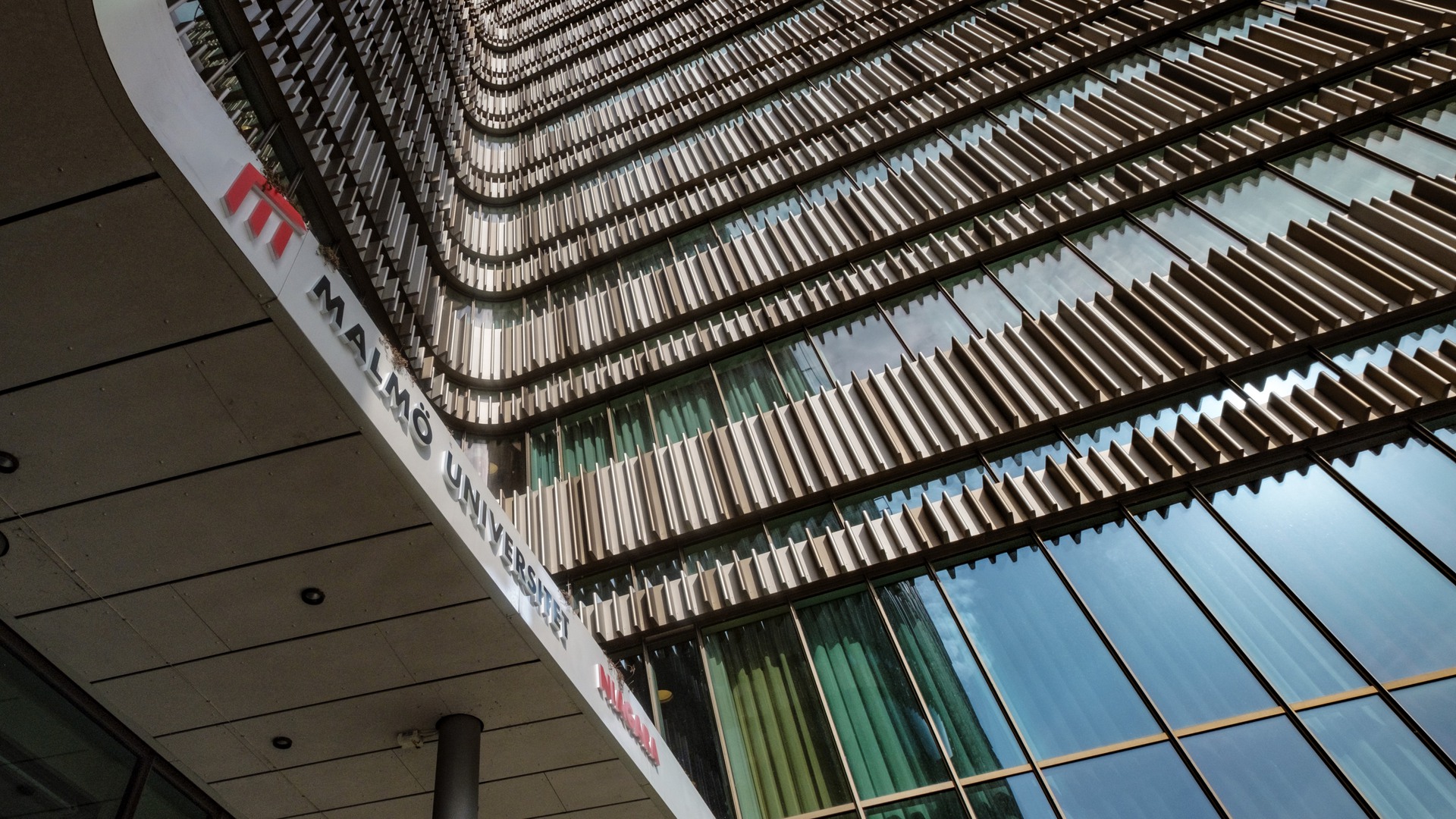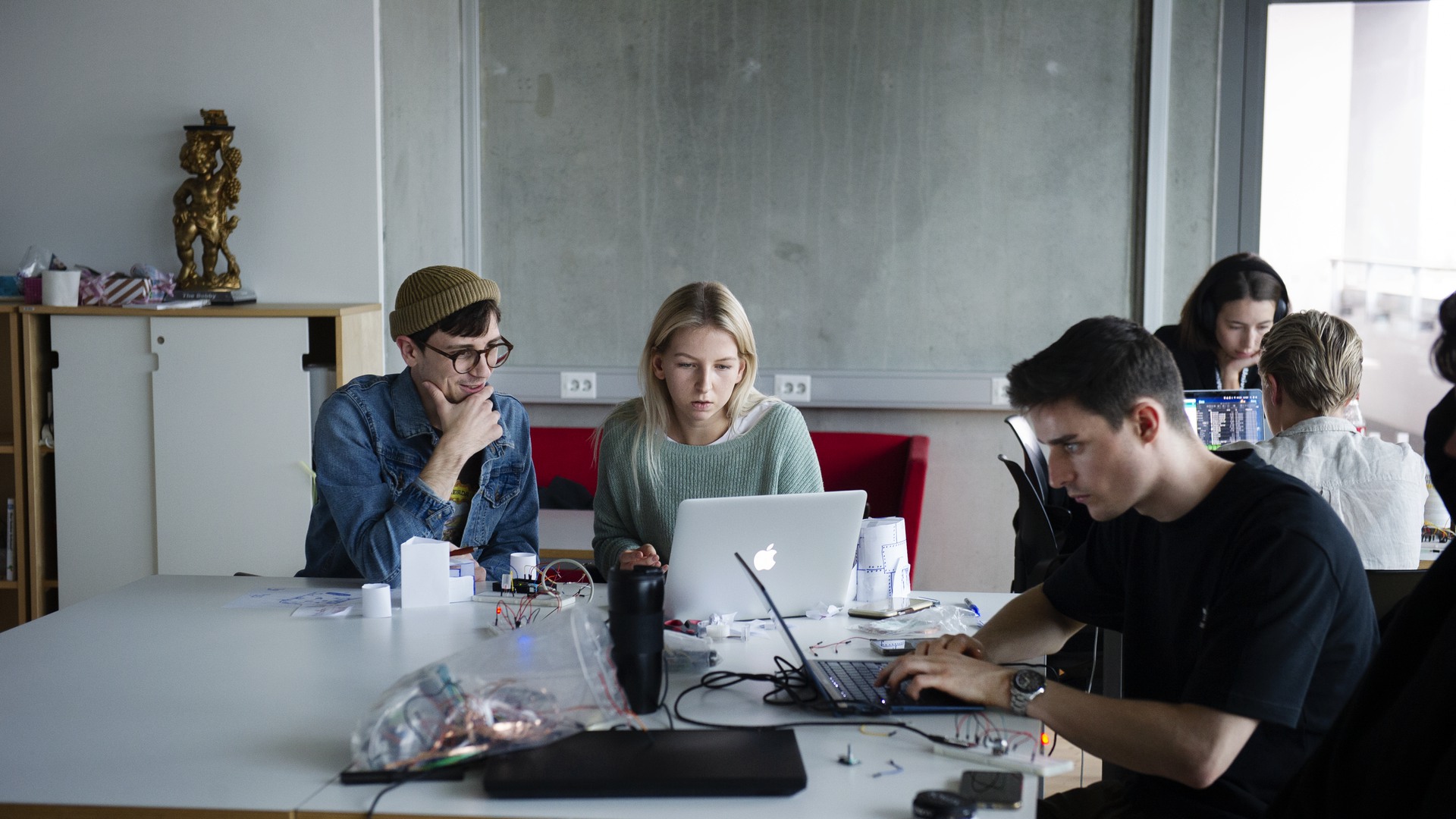Shaping the future of technology through design
Julian Friedrich, originally from Germany, graduated from the bachelor's programme in Interaction Design in 2024. With a passion for traveling and language learning, he was drawn to studying in an international environment, which ultimately led him to Sweden.
Discovering Interaction design
After finishing high school, Julian was uncertain about which field to pursue. He knew he wanted to work with technology but also felt a strong pull toward creative disciplines. At the time, he wasn’t even aware that Interaction Design existed.
– I was completely unsure about what to study, but I knew I wanted something that combined technology and creativity. When I discovered Malmö University and its international atmosphere, the Interaction Design programme stood out with its mix of design, computer science, ethnography, and technology innovation, he explains.
A programme that combines theory and practice
Julian describes his experience in the programme as both enriching and rewarding. He appreciated Malmö University’s modern facilities, particularly the Interaction Design studio overlooking the harbour, where students could fully immerse themselves in their design work.
– The University provides a great learning environment with open and bright spaces, easily accessible by bike or public transport. The library has a welcoming atmosphere, and the well-equipped workshop with 3D printers, laser cutters, and woodworking machines was incredibly useful for prototyping, he says.
The programme introduced students to a wide range of Interaction Design topics, from research and prototyping to programming, Arduino, and Service Design. A strong theoretical foundation in Human-Computer Interaction, combined with hands-on projects, helped Julian develop both practical and analytical skills.
– We didn’t just focus on making things – we also learned to engage critically with academic literature and develop strong arguments in our writing, which has been invaluable for me as a designer.
A highlight of his studies was the opportunity to do an internship as part of a research project on public e-service innovation in Scandinavia. The thesis project also stood out as a culmination of everything he had learned.
– Being able to choose my own thesis topic, combined with great supervision, made it a fun and rewarding way to complete my degree. It also helped me build a strong portfolio, opening many career opportunities.
Meeting expectations and finding inspiration
Before starting, Julian wasn’t entirely sure what to expect from the programme but anticipated a hands-on approach with plenty of opportunities to create and build. His expectations were definitely met.
– We did a lot of physical prototyping and worked with Arduino, which was not only fun but also really insightful.
One of the most valuable courses for him was IxD in Society, where students collaborated with real stakeholders from Malmö’s public sector.
– I was particularly drawn to Service Design, and this course introduced me to participatory design – a tradition deeply rooted at Malmö University. The idea of giving people an active role in shaping the services and products that impact their lives resonated with me, he explains.
Skills that shaped his future
The programme offered a strong mix of practical and theoretical elements.
– One of the most useful practical skills I gained was coding in JavaScript. With AI tools available today, knowing the basics opens endless opportunities. We also learned to use Figma, which I now use all the time.
On the theoretical side, Julian particularly appreciated the programme’s emphasis on critically engaging with academic literature.
Continuing his journey in design
After graduating with his bachelor's degree in Interaction Design, Julian decided to continue his education with a master’s degree in design. He is currently studying Product-Service System Design at Politecnico di Milano in Italy.
– I strongly believe that the high quality of the Interaction Design programme created this opportunity for me. Looking at the diverse career paths of Interaction Design alumni, I’m excited to see how I can make an impact as a designer.
Advice for future students
Julian believes the programme is ideal for those who are curious about technology and its increasing role in society and who want to take an active role in designing the future.
– If you’re interested, I recommend taking the free-standing course in Interaction Design, it’s a great way to see if the programme is the right fit for you.
For those already enrolled, his best advice is to take full advantage of the freedom offered in projects.
– Shape your assignments around what you’re passionate about. Be curious, engage in discussions, and learn from both your teachers and fellow students. The more you invest in your education, the more you’ll get out of it, he adds.










